
Layout, design and features …
Externally, the more powerful Liquid Freezer III Pro hardly differs from the normal Liquid Freezer III. Only connoisseurs will notice the slightly larger hub diameter on the radiator fans. The 38mm thick aluminum radiator has accompanied the Liquid Freezer series since the 2nd generation. It ensures significantly higher heat conversion than the radiators of most other manufacturers of complete water coolers, but also requires 13mm more space in terms of thickness, which should definitely be taken into account when choosing a case. As usual, the workmanship and material quality are first class. The new LF3 Pro 360 weighs in at just under 2kg.
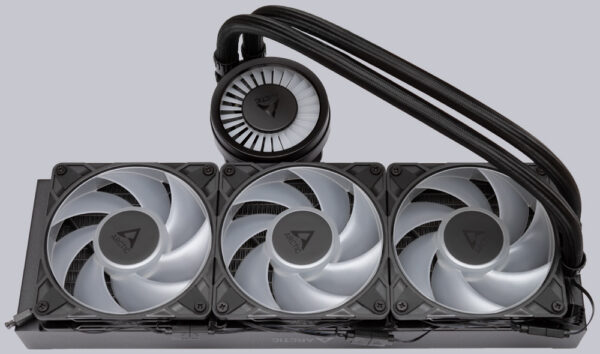
The fans are already mounted on the radiator in advance, with Arctic also taking care to accommodate the cables in a space-saving manner. Unfortunately, the RGB connectors are not secured with clips to prevent unintentional opening, which can happen from time to time. As the new, more powerful fans are no larger than standard fans, the space required for the Liquid Freezer III Pro does not change compared to the normal LF3.
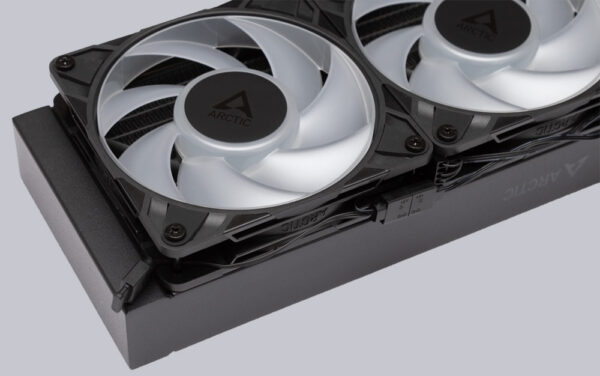
The new Arctic P12 Pro A-RGB fans have 7 rotor blades and a surrounding ring. The large hub, which houses the 0.33A drive and the 12 new Gen2 A-RGB LEDs, is striking. Silent 0dB PWM control has been omitted this time, as the minimum speed is already a considerable 600 rpm at PWM values of up to 5%. However, as the Liquid Freezer III Pro extends the product portfolio upwards, this restriction is probably not worth mentioning. The performance data of the new P12 Pro fans is remarkable: with a high air pressure of 6.9 mmH2O, they achieve more than three times the value of the fans of the normal LF3. The airflow increases by approx. 40% at a good 50% more speed.
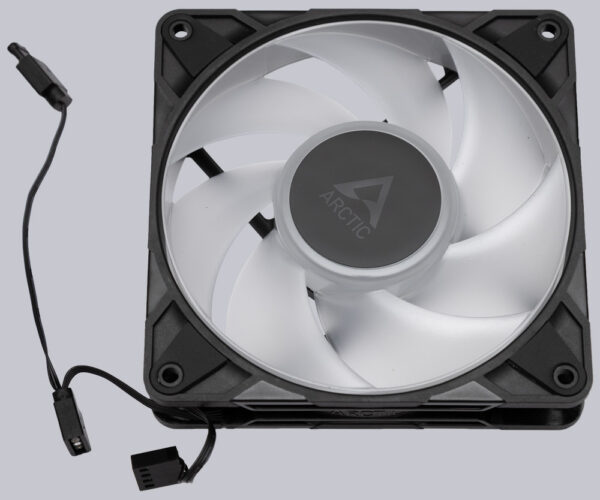
To minimize vibrations, the fans have rubberized contact points and a liquid bearing. Our practical test will show whether this is still relevant at a speed of 3000 rpm. As the cabling has already been laid to the pump at the factory, the connection cables are shorter than those of standard fans from the accessories range. Fortunately, however, proprietary plugs have been dispensed with, making it relatively easy to make changes to the cabling if required.
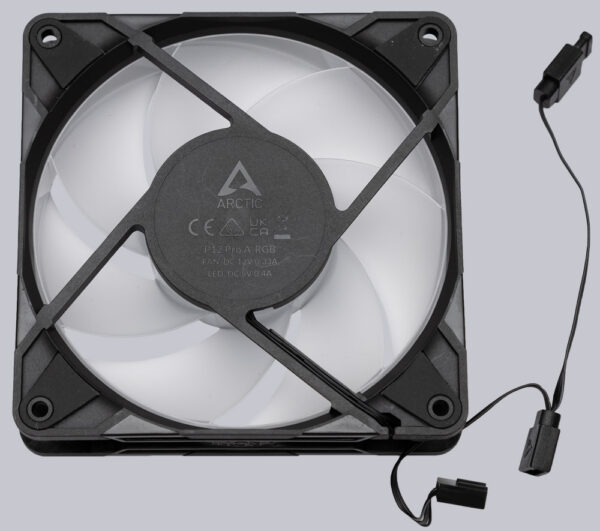
Although there are no official changes to the pump block compared to the normal Liquid Freezer III, at least the circuit board bears the markings V2.5 and Rev.2, which indicates a revision. Externally, we noticed that the spring steel plate that presses the pump block onto the CPU is now much less bent than on the Arctic LF3 280 we tested previously. This means that the screws on the Arctic LF3 Pro protrude a little further out of the bottom of the cooling block, which should make installation easier. The technical data for the cooling block of the new LF3 Pro has remained unchanged compared to the LF3, as the pump can still be regulated between 800 and 2800 rpm and continues to consume a maximum of 0.38A at 12V.
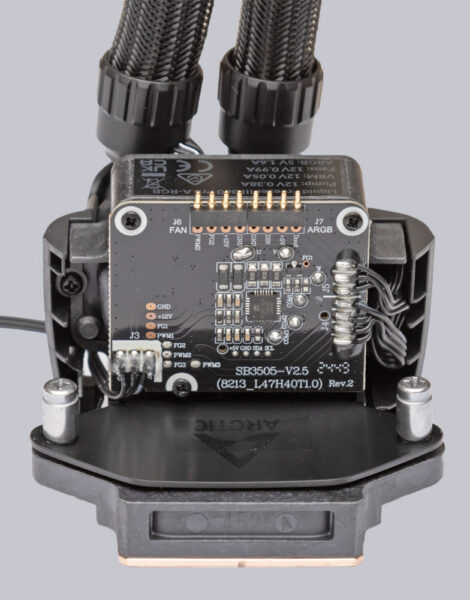
The approx. 50mm VRM fan, which is placed on top of the pump and held in place by magnets, also rotates as usual at a speed of between 400 and 2500 rpm at an extremely frugal maximum of 0.05A at 12V. Its 12 addressable RGB LEDs now also work according to the Gen2 standard and are once again located behind the transparent fan cover on the top of the VRM fan.
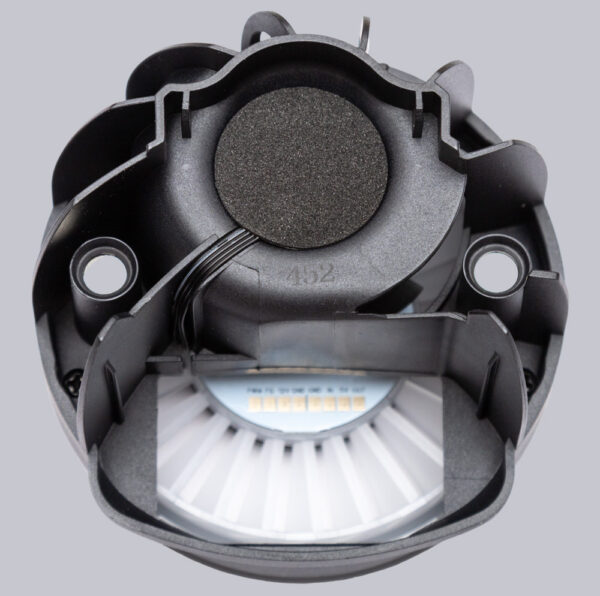
There are again 2 options for controlling the pump, the VRM fan and the radiator fans. Either all speeds can be controlled synchronously via the single connection cable with just a single PWM connection …
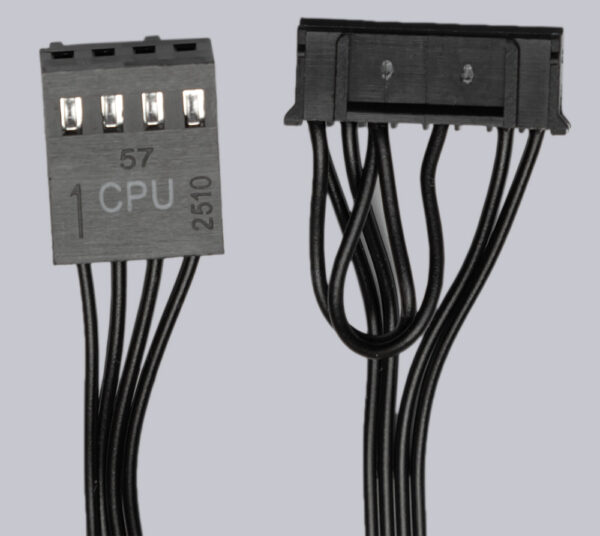
… or you can use the multi-connection cable with separate PWM plugs for the pump, the VRM fan and the radiator fans.
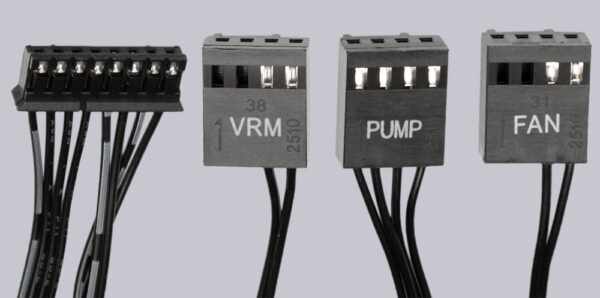
Be careful when connecting the Liquid Freezer III Pro to a single PWM port! At maximum power, the Arctic LF3 Pro requires approx. 1.4A, which can already overload many PWM connections on motherboards where the limit is 1A. However, some newer motherboards now offer PWM ports that can provide up to 3A, especially for connecting water cooling systems.
The contact frame for Intel LGA 1700 and LGA 1851 systems on the Liquid Freezer III Pro now has offset mounting points for the CPU block, which brings the cooler closer to the hotspot of the new Intel Core Ultra processors to improve cooling. In addition, the contact frame bends the CPU less than the original clamping mechanism (ILM), which further improves the contact between CPU and processor.
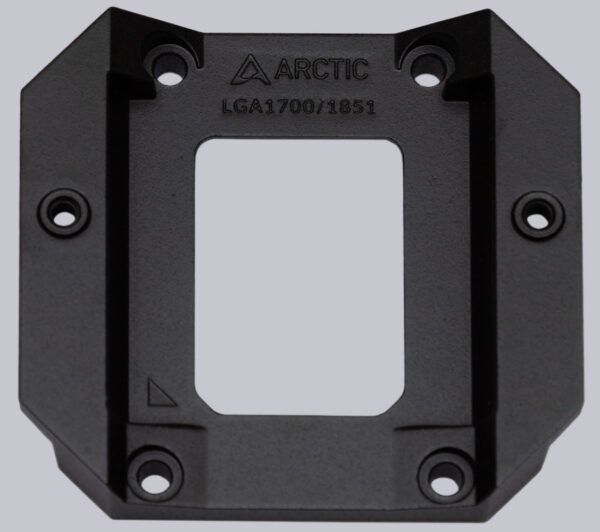
Since this review will mainly focus on the most important details and the changes compared to the normal Liquid Freezer III, we would like to refer you to our test of the Liquid Freezer III 280 for a complete explanation of all the details of the Arctic Liquid Freezer III, where we have described all the details in detail. Of course, we have also published a few pictures of the ARGB lighting and a video of the Arctic Liquid Freezer III 280 A-RGB on our YouTube channel 
Next, we install the water cooling on our AMD test system.
Arctic Liquid Freezer III Pro 360 A-RGB Installation …

